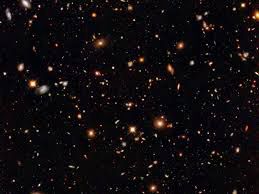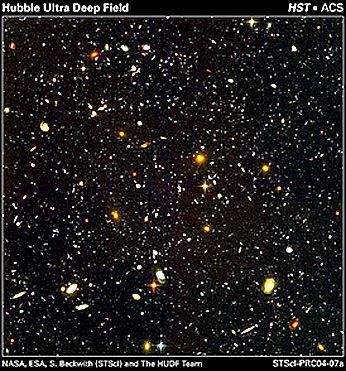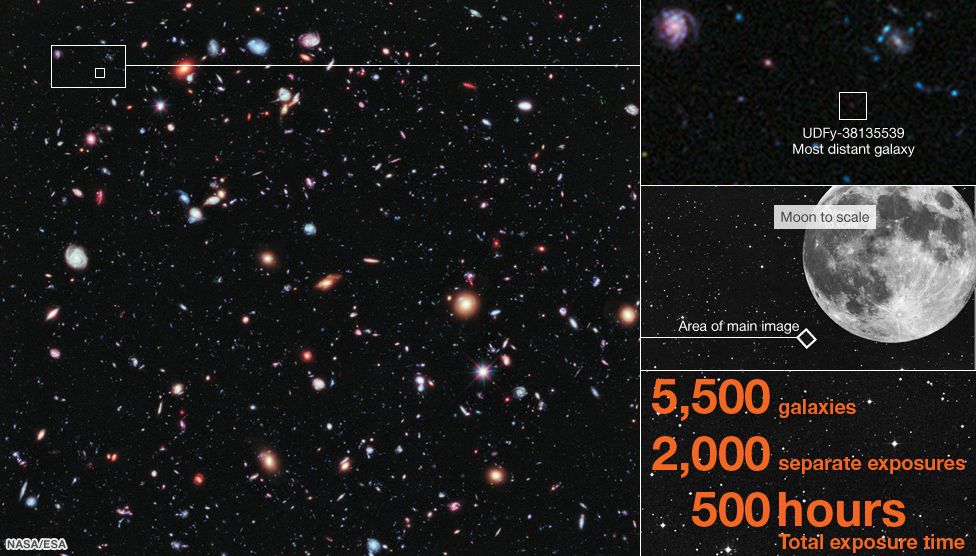Discovery
Discovery
I take it back. The most important scientific discovery is the fact that the universe is so vast. This realization occurred when the Hubble telescope was used to expose one tiny section of space for days. It's called the Hubble Deep Field image.

The original HDF image was exposed for ten days in 1995. The telescope was aimed at a small area (one 24-millionth of the sky) in the constellation of Ursa Major. Previous telescopic images of this area only revealed a few foreground stars, but the new Hubble image revealed 3,000 new objects that were previously unseen galaxies.

Subsequent to this is the HUDF or Hubble ultra deep field image of a small section of sky in the constellation Formax. This image revealed 10,000 new galaxies. In this case the galaxies were formed 13 billion years ago.

The XDF or Hubble eXtreme Deep Field looked at the same location only with a smaller area and revealed 5,000 new galaxies that are from 13.2 billon years ago.
What did all of these amazing images tell us?
That's a good question. What it told astronomers was that their original estimate of 300 to 500 billion galaxies in the universe was way too low. The new estimate is that there are 2 trillion galaxies with from 300 to 500 billion stars in each.
Will these estimates be increased?
There are a few things that will keep us from ever knowing how large the universe actually is. We are rapidly reaching the physical limit of looking back beyond the 13.2 billion years since the Big Bang. The yet to be launched James Webb telescope may help boost the estimate.
The main problem is that at the known edge of the universe, space is expanding near the speed of light. This means that the light beyond that point can't get back to us. This is the visibility limit. In other words, space beyond this horizon edge is no longer observable. That suggests that the universe could be much larger than we realize.
This problem has prompted cosmologists to define the 'universe' as the observable universe. This means that the number of galaxies that we can see may be a very small number compared to what's in the total universe. One estimate puts the entire universe's size to be 3 times 10 to the 23rd power times the radius of the observable universe. That's beyond imagination.
So, what this means is that we are looking out at a horizon of sorts. This horizon is at the limit of the cosmological universe as we know it. This makes us even tinier than we thought. We are nothing but a tiny spec in a universe that knows no bounds. For all practical purposes we could consider the universe to be infinite.
One thing we can say for sure is that we have only scratched the surface of what's possible to discover in this vast reality we call the universe.
Thanks for reading.
Bạn đang đọc truyện trên: Truyen247.Pro